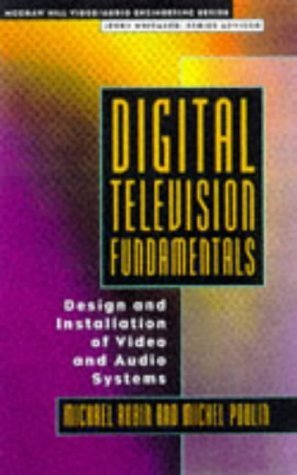This work is an engineering level guide to the design and operation of digital television technologies, covering digital basics from the perspective of the analogue proficient broadcast engineer who deals with digital imaging. Topics covered include: data multiplexing; compression; signal processing; and multimedia. It also describes digital and analogues television and covers video and audio aspects of digital TV.
Some comments related to Chapter 11In addition to the publisher's comments we would like to attract the attention of our readers to Chapter 11 of our book which takes 45 pages to detail the American DTV concept and the evolutionary process that resulted in its adoption thus making possible for the first time the achievement of several desirable goals such as:
- The mandatory use of digital technologies for signal processing, compression and transmisison in a 6 MHz channel as well as the gradual phasing out of analog NTSC transmissions by the year 2006.
- The accomodation of several picture and sound quality levels ranging from a single HDTV signal per channel with AC3 multi-channel sound capabilities down to multiple SDTV signals per channel or the transmission of data as chosen by the broadcaster.
- The revolutionary concept of computer/broadcast interoperability that has long eluded both camps.
A variety of topics related to the transition from analog NTSC to DTV in its many formats are discussed in detail.
